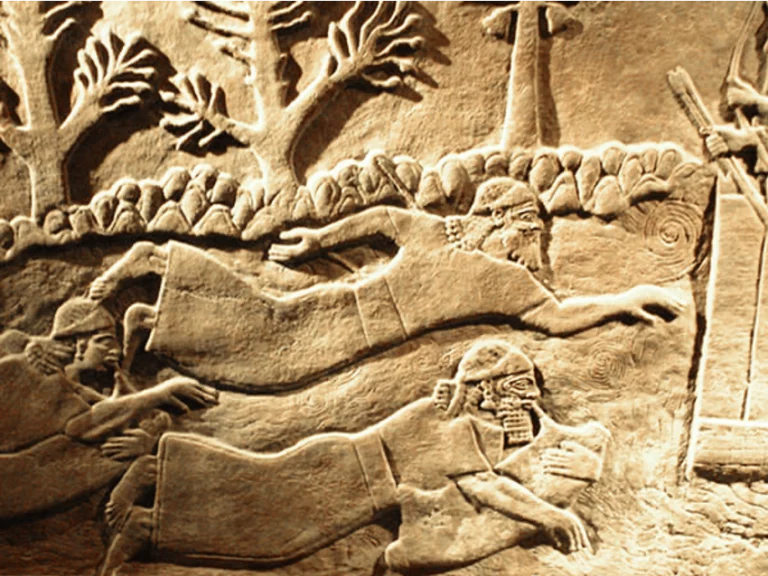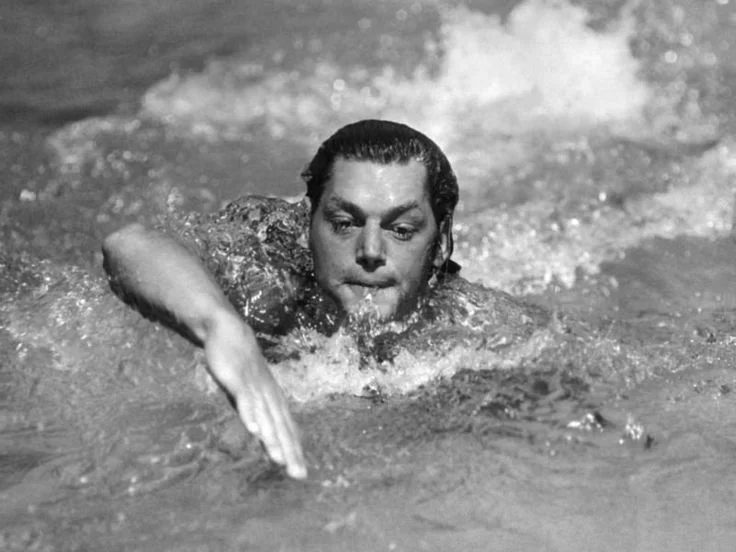Our swim school is Qualitop certified and recognized by numerous health insurance providers. This means, depending on your insurance plan, a portion of the course fees may be reimbursed. Please check with your health insurance provider for specific details.
Swimming school » Blog » The brief histoty of front crawl swimming stroke
The brief History of the Front Crawl / Freestyle Swimming Stroke
Before we dive into its history, it is important to define and clarify what we mean by front crawl swimming. Front crawl swimming, crawl swimming, Australian crawl or American crawl all refer to the same swimming stroke or swimming style. The name “front crawl” is thought to have originated from the Australian swimmer Dick Cavill, who likened his technique to crawling through water. While one arm is pulling and pushing under the water, the other arm is recovering above the water, alternating from side to side.
Freestyle Swimming, synonymous with the front crawl stroke, is a swimming event category at swimming meets, where the swimming style is not regulated. Freestyle refers to any style other than backstroke, breaststroke or butterfly.
The front crawl stroke is not only the fastest, but also the most natural swimming stroke. The asymmetric nature of the stroke is similar to walking, where the arms and legs alternate rhythmically. Babies and children will often instinctively perform a similar asymmetric “crawling” movement pattern in the water unaided.
Sources have shown that the ancient Egyptians (dating to ca. 2000 BC) were already using some sort of front crawl swimming style to move through the water. From America to Africa, native populations located close to water developed their own swimming styles and some of them were considered early versions of the front crawl stroke.

The first mention of the front crawl stroke in a competitive context was reported by The Times newspaper in 1844 from a race in London, in whichtwo native Americans, Flying Gull and Tobacco, were said to be lashing the water violently with their arms like the sails of a windmill and beating downwardly with their feet. Observers were reported to be shocked by the stroke and its difference to breaststroke, which at that time was the only competitive stroke used in European swimming clubs.
At the first modern Olympics games in Athens in 1896, the Hungarian Hajós Alfréd won the 100m and 1200m freestyle swimming events using an early but effective version of the front crawl stroke. Hajós stated that he had learnt this swimming style from the sailors of the river Danube in Budapest. The majority of freestyle swimmers at the first four Olympic Games used a hybrid style of front crawl arm technique and breaststroke leg kick, called “Trudgen stroke”, named after the English swimmer John Trudgen, who himself learnt this style while living abroad from South African natives.
At the turn of the 20th century, there was no internationally agreed front crawl swimming style. Body and head positions, type and intensity of the leg kick, coordination of the arms, as well as the amount of body roll all varied widely from country to country. In addition to the European swimming communities, the Japanese, American and Australian communities all contributed significantly to the development of the front crawl stroke.
In the 1920s, the American Johnny Weismüller dominated the sprint freestyle swimming events with his unique front crawl technique. Interestingly, his head position was extremely high, which is now considered a disadvantage. The American won several Olympic gold medals and was the first person to swim the 100m freestyle in under a minute. After his retirement from competitive swimming, Weismüller became an actor and gained fame through his best known role as “Tarzan”.
The technical improvement of front crawl continued throughout the early 20th century and the swimming stroke started to adopt specialized forms. The international swimming community realized that there was no single way to swim front crawl efficiently. Swimmers began to adapt their swimming techniques to the chosen distance and to their physical abilities. Differences in stroke rates, frequency of kick, breathing patterns and the amount of body rotation were the main characteristics that differed between the applied swimming techniques.

In the second half of the 20th century ,three sprinters would define themselves as the greatest of their generation: the two Americans Montgomery and Biondi, and Popov from Russia. Their technique was already very similar to today’s sprint technique but they used a bent arm recovery. Meanwhile the use of straight arm recovery in front crawl swimming in sprint events become really common.
The adaptationof front crawl techniquesto distance swimming also resulted in some outstanding performances, such as the Soviet Vladimir Salnikov’s sub 15min 1500m freestyle in 1980, becoming the first person to break the 15 min barrier for this distance. His dominance in distance (pool) events was followed by great Australians swimmers such as Perkins, Hackett and Thorpe. There were, of course, many other outstanding male und female athletes who influenced the development of the front crawl stroke but are not mentioned here due to the brief nature of this article.
It is important to point out that, as well as individual swimmers and coaches, technological developments also played a crucial role in the development of swimming techniques. For example, the application of underwater imaging contributed enormously to the better understanding of the front crawl stroke. There are numerous coaches and sport scientists who influenced modern swimming techniques; James “Doc” Counsilman, for example, whose work left an indelible mark on the sport.
Swimming techniques and sport science have improved in synchrony throughout the recent past, leading to some amazing individual performances. World record times are, however, being slashed at such fine margins, proving that both the physiological barriers of the human body, as well as recently applied swimming techniques are almost at their limit.
Based on this knowledge, there is no doubt that the importance of swimming technique should not be overlooked or underestimated. Swimmers and triathletes of all levels should aim for the best possible swimming technique at all times to maximize their efficiency and reduce the chance of an injury occurring while swimming.
Swimatic crawl swimming courses are designed to develop and improve front crawl technique to make it both efficient and fit individual goals and abilities. We look at front crawl swimming not as a rigid set of rules but as a flexible system. In addition to evidence-based training methods, personal experience and innovation also have an important role in our coaching philosophy.
This article is subjective and an incomplete presentation of the history of the front crawl swimming stroke. We are aware that many events, persons and processes are not mentioned, although they influenced the development of the discussed swimming stroke. The aim of this read is to provide some information in a short and easy-to-read manner.